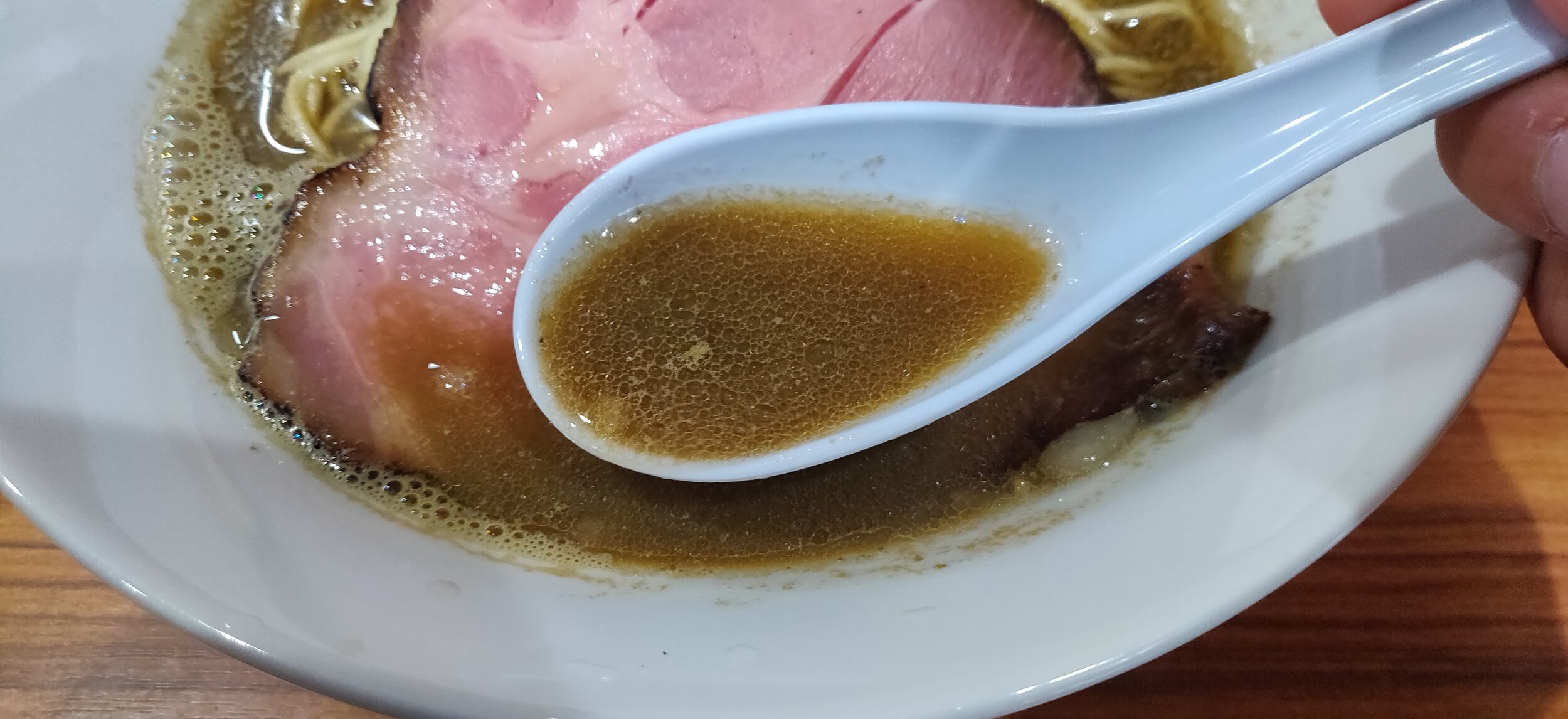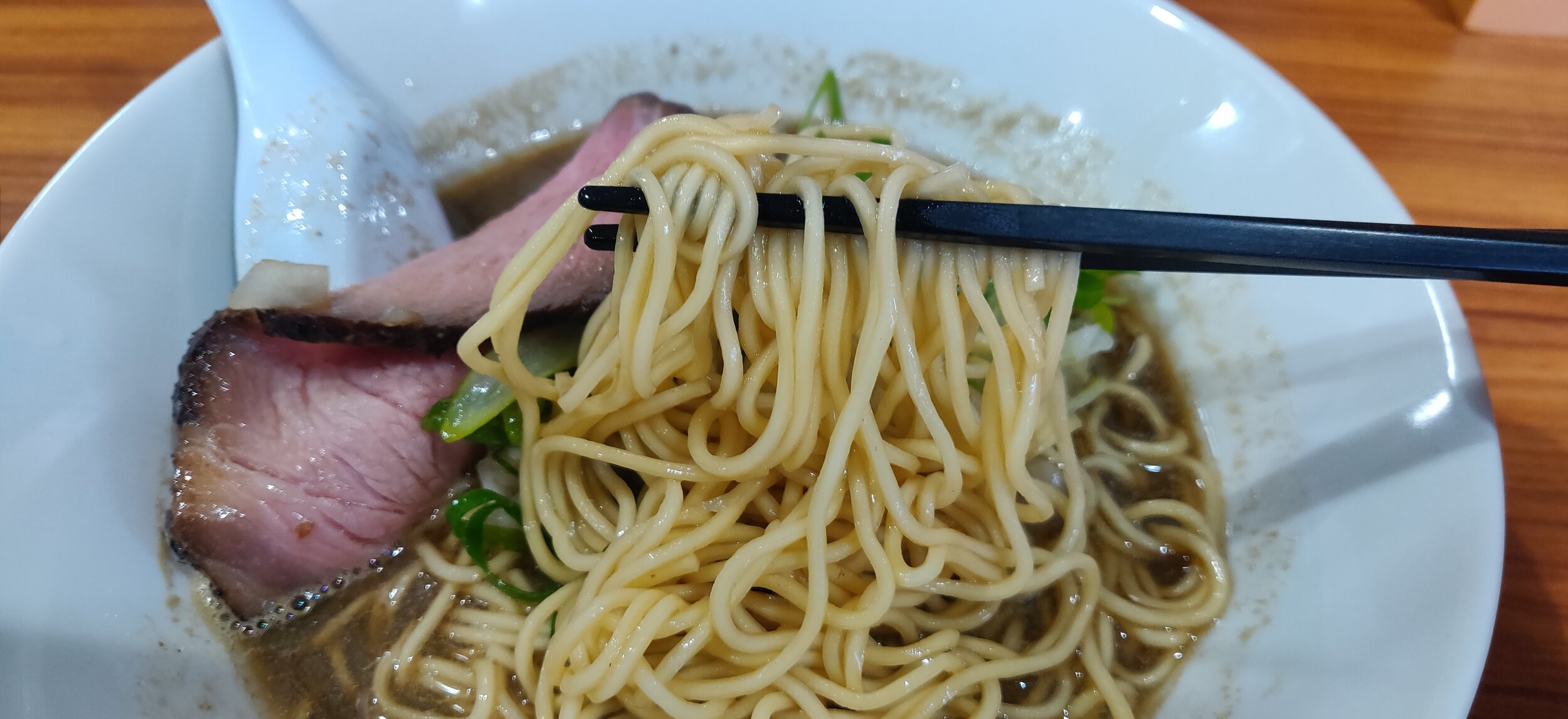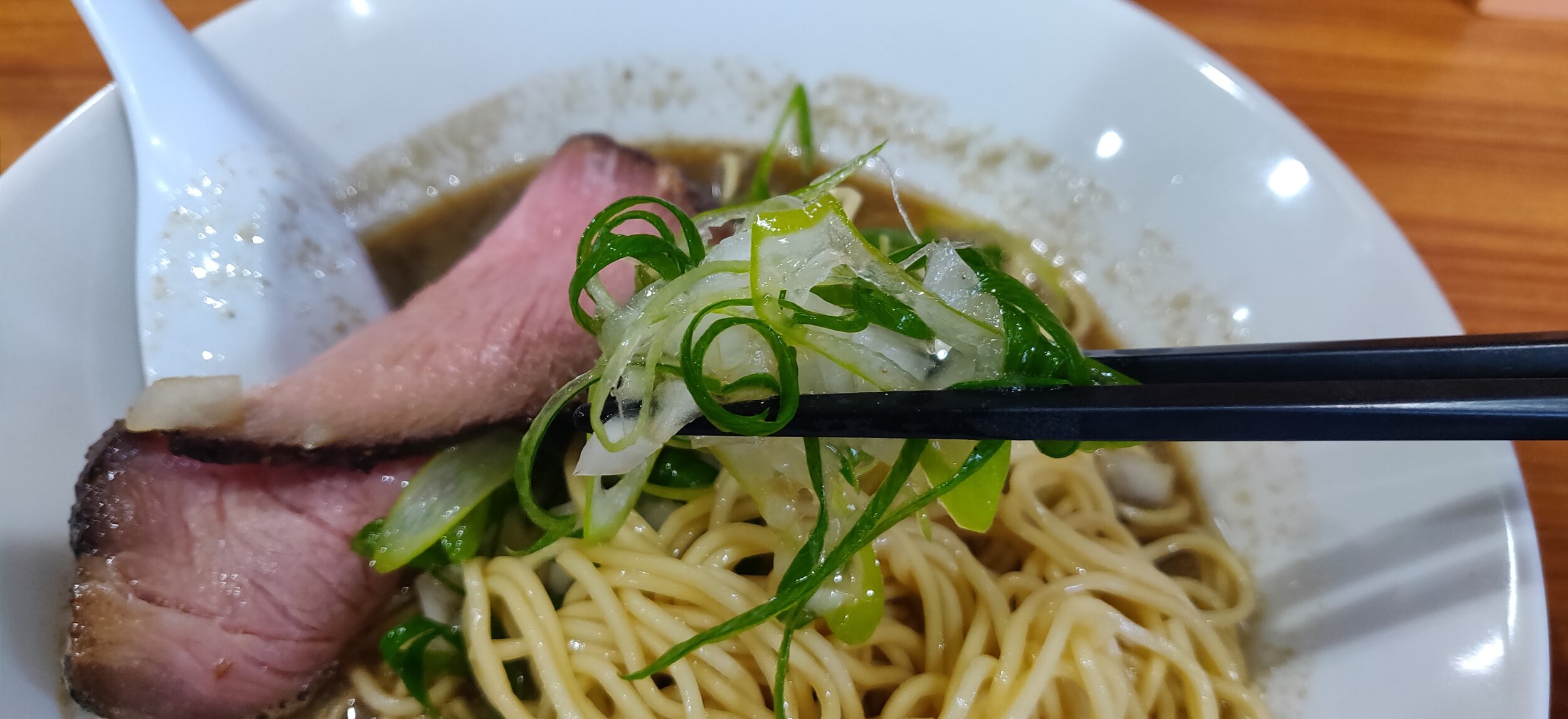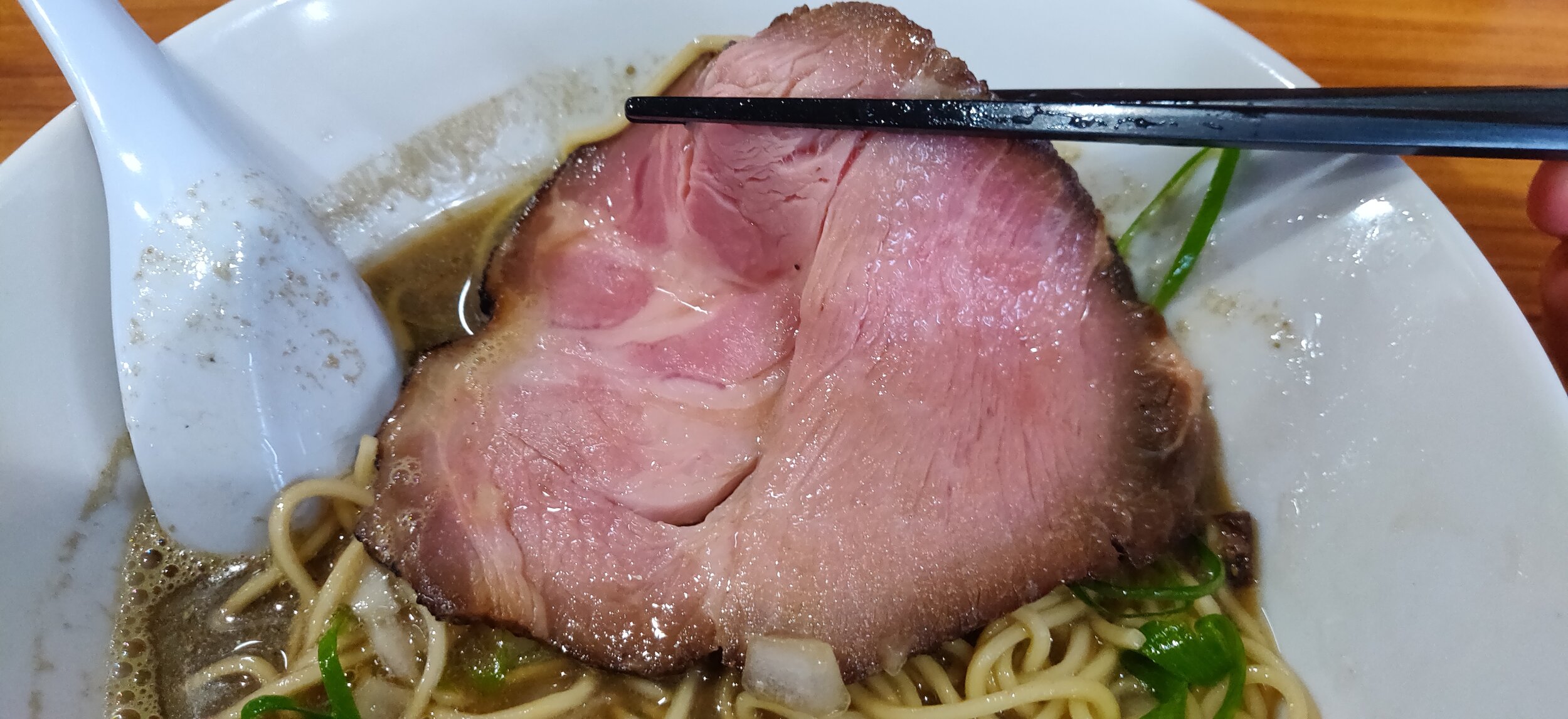Chuka Soba Nishikawa (中華そば西川); Beginner’s Guide to Niboshi Ramen, Chitose Funabashi, Tokyo
I tend to eat a lot of Niboshi ramen. Not sure what sparked it, but I fell in love with the Umami goodness a couple years ago and nowadays, the dirtier and thicker the soup, the more it calls to my inner cravings. However, for first time Niboshi ramen eaters, places like Ibuki and Hiwamatanoboru can be a bit intense and may turn you off the style entirely with how extreme their soups are. It definitely takes a bit of getting used to and you have to gradually step up to the intensity that these two shops bring. If you’re curious to test your palate, I wholeheartedly recommend going to these two shops, but if you want to try a lighter Niboshi ramen first, Chuka Soba Nishikawa is the perfect place to wet your feet. Located a short walk from Chitose Funabashi station on the Odakyu train line, Nishikawa brings a tamer, more inclusive take on this otherwise dividing ramen style.
Nishikawa is open Wednesday-Sundays and is a lunch only shop. They are open from 11:00-15:00 and is closed on Mondays and Tuesdays. Chef Nishikawa-san trained at the famous Eifukucho Taishoken (training ground for tons of top tier ramen masters) and Take-chan Niboshi Ramen in Chofu (one of the OG Tokyo Niboshi ramen shops). Nishikawa doesn’t get a lot of foreign clientele so their ticket machines are only in Japanese so I’ll do my best to translate it here. Starting with the top row are the ramen options. From the left is Chuka Soba (regular ramen), Ajitama Chuka Soba (Ramen with soft boiled egg), Chashu Soba (Ramen with extra pork chashu), Wonton Chuka Soba (Ramen with wontons) and Men Oomori (large portion of noodles). Second row is the Ajitsuke Aedama which is a separate bowl of seasoned noodles which I highly recommend ordering. Third row are the toppings of Ajitama (soft boiled egg), Wonton (wontons), and Chashu (pork chashu). Fourth row is the Jyou Niboshi Soba which is the extra rich Niboshi ramen. Not recommended for first timers, but not quite as intense as the previously mentioned shops. Fifth row is a bottle of beer and the last row is for take home ramen. My order for the day was the Jyou Niboshi Soba and an Aedama which I will explain later in this review.
Pictured is their Jyou Niboshi Soba. If you take a look at my reviews of Ibuki and Hiwamatanoboru, you’ll see that Nishikawa’s more intense Niboshi ramen isn’t quite as gritty and thick as the ones served in the aforementioned two shops. While, yes, this is a bit more intense than what their regular bowl is, I think this is a nice step up to start with before venturing off to the more intense versions of this style. If you’re still feeling weary about it, order the regular bowl which is equally good, just not as impactful. Visually a simple bowl and it skips the thrills and frills of excessive toppings. The bowl reminds me a lot of one of the Niboshi OG ramen shops, Ito. My bowl came with a huge slice of pork chashu and hidden beneath it was a mound of chopped negi, stiff (yes, stiff) noodles in the gritty, Niboshi soup.
Soup here is absolutely divine bringing forth beautiful, aromatic flavors with every spoonful of this liquid gold. The base is a 9 to 1 ratio of Niboshi to animal stock using Katakuchi Iwashi, Ma-Iwashi, and Urume Iwashi among others from Nagasaki and Chiba prefectures. The goal for the soup was to make a rfined bowl of soup by balancing the bitterness, sweetness, and acidity of the dried fish varieties. I think Nishikawa-san did just that as it made for a truly delicious soup. The aroma oil is a Niboshi infused oil and uses a shoyu tare for seasoning. Most ramen enthusiasts agree that the regular bowl is very balanced, not too rich or light making it truly the best bowl of Niboshi for novices to this style. However, I got the thicker version of their basic soup which did shift the needle towards a richer base, but even so, not to the point where it was unbearable for beginners. I really enjoyed the bitterness that comes out of this richer soup base, but the highlight is definitely the shoyu tare which both accentuates and rounds out the rigidness of the different niboshi varieties together in to a more cohesive, balanced soup. Squid and oysters are used to infuse the shoyu tare and it is pretty evident as soon as you have a taste of the soup. The Niboshi infused oil was a nice touch as well as a more traditional chiyu, chicken oil, would have muddled the flavors a bit too much.
Noodles are manufactured from Mikawaya Seimen and are thin, rectangular cuts that are cooked very al dente. The al dente cooking is pretty common in Niboshi ramen as it helps give the noodles more body and not lose out to the intense Niboshi soup. The stiff, brittle, almost crispy noodles are phenomenal and is one of the joys of eating this style. Be sure to enjoy every strand if it’s your first time. Each bite helps burst a fantastic flour aroma that captivates your taste buds and readies you for the Niboshi heavy soup. Noodles feels like they have a lower water content which helps cling and soak the soup better than most. Chashu is cooked sous vide and maintains its moisture and makes for an overall better quality final product. It is marinated a bit, but nothing that overpowers the soup. The cut is quite generous as you can see in the photo, although I think I would have preferred if it were two smaller slices. Negi is a great palette cleanser that readies my taste buds for my next bite of noodles.
A must order here is the Aedama. To be honest, Aedama is offered at most Niboshi restaurants and I recommend ordering it whenever it is offered. Typically the noodles are cooked al dente and served in a bit of tare and infused aroma oil. Nishikawa is no exception, but they also serve it along with a generous portions of thinly sliced pork chashu, gyofun fish powder, and a bit of negi. If it’s your first time, mix the contents of the bowl thoroughly and have it as is. You’ll get a better, clear flavor of the infused shoyu and oil which stands alone really well. You may be tempted to finish the noodles as is, but be sure to add a bit of vinegar which is available on the counter to help cut through the aroma oil a bit if you find it to be too fatty. The acidity is perfect when you finally dump your Aedama noodles in to the soup as it helps bind the two together.
If you’re a more advanced Niboshi fan and have an affinity to a thicker, more intense Niboshi ramen, Nishikawa probably isn’t the shop for you. However, if you are a beginner or enjoy a lighter Niboshi soup, I wholeheartedly recommend adding Nishikawa to your hit list. The shop staff are friendly, the ramen is delicious, and the ambiance if what you’d hope for a neighborhood ramen shop like this one, so particularly good shop for residents of Tokyo who wants to explore a more hidden area of Tokyo. By the way, if you’re here looking for more ramen recommendations, please consider buying my eBook where I highlight 15 shops I recommend to visitors (and residents) to Japan. Tons of information on the 15 shops and some travel tidbits to make your experience in Japan as smooth as possible!








